St. Vitus Church, Forio
Following Via Roma, which starts on the right side of the Loreto Basilica, you will reach Via San Vito. At the end of this street is the oldest parish church of Forio, named after the patron saint of the island (Chiesa di San Vito on the map). Historians suggest that there was a Romanesque church on the site as early as the 12th century.
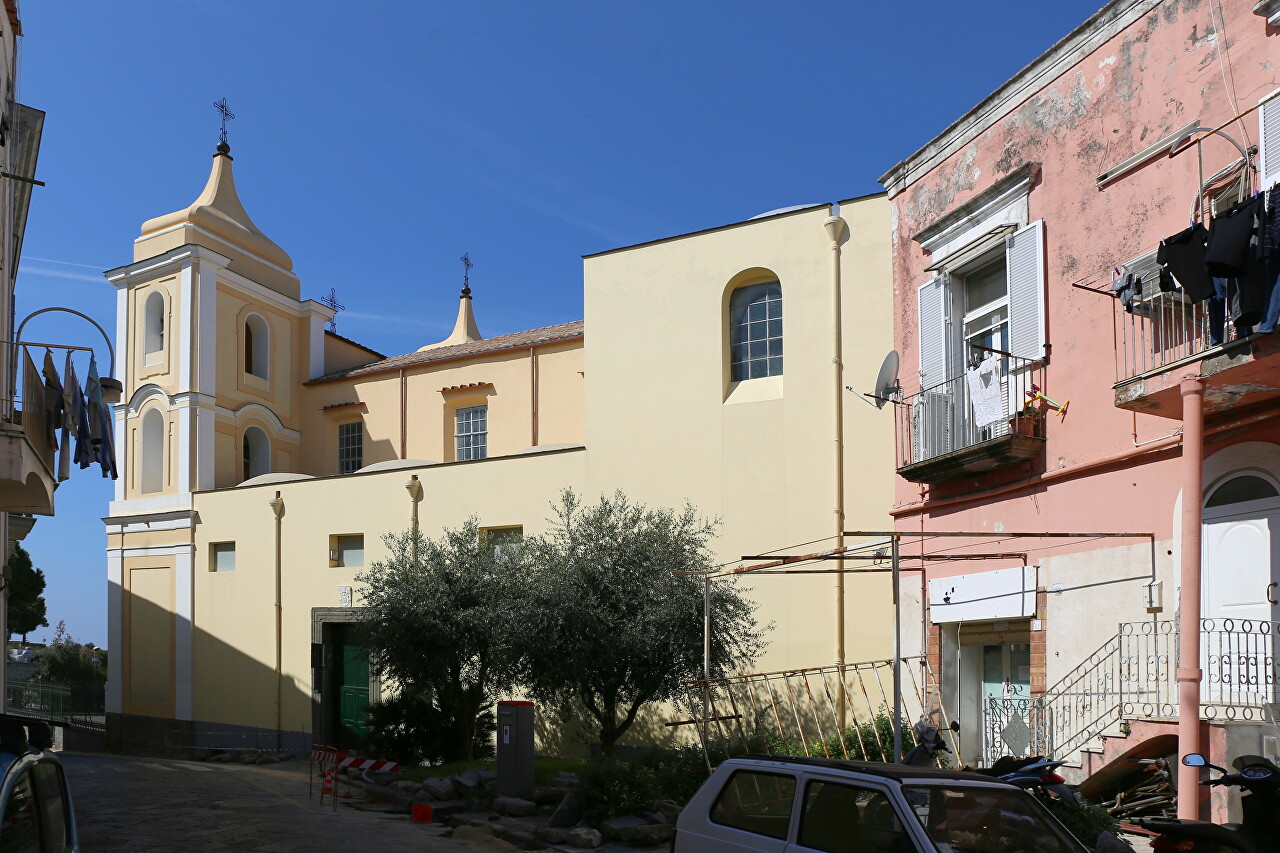
The local historian Giuseppe D'ascia wrote in 1867 in his seminal work "The History of the Island of Ischia": "This church is very old, and there is no data on the date of its foundation. The first entries in the baptismal register date back to 1620." Later, a document was discovered in the bishopric on the appointment of a priest to the parish of St. Vitus in Forio, dated 1306.
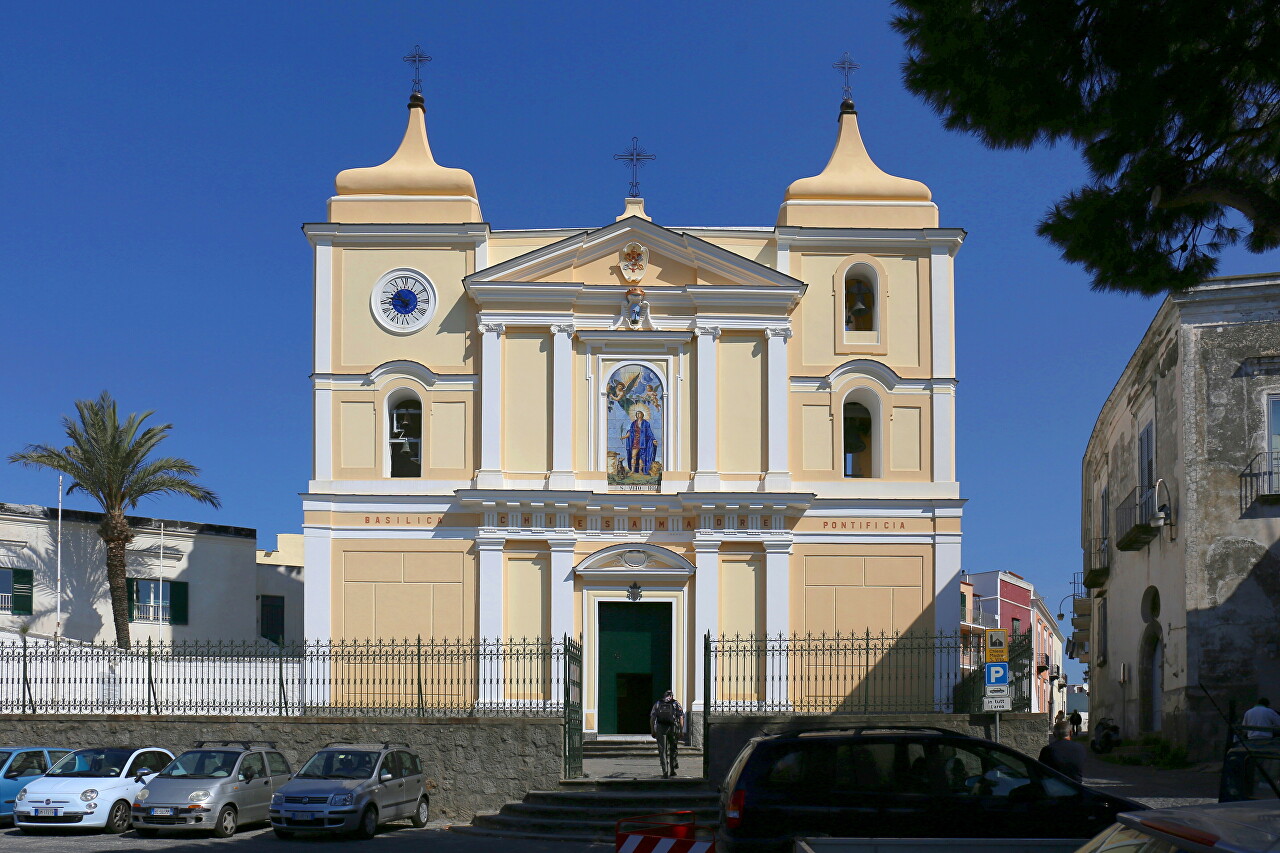
Information about the building's construction date varies from the twelfth to the fifteenth century. According to the famous archaeologist Pietro Monti, the original church of St. Vitus was located on the shore of the bay, in the fishing village from which the town of Forio grew.
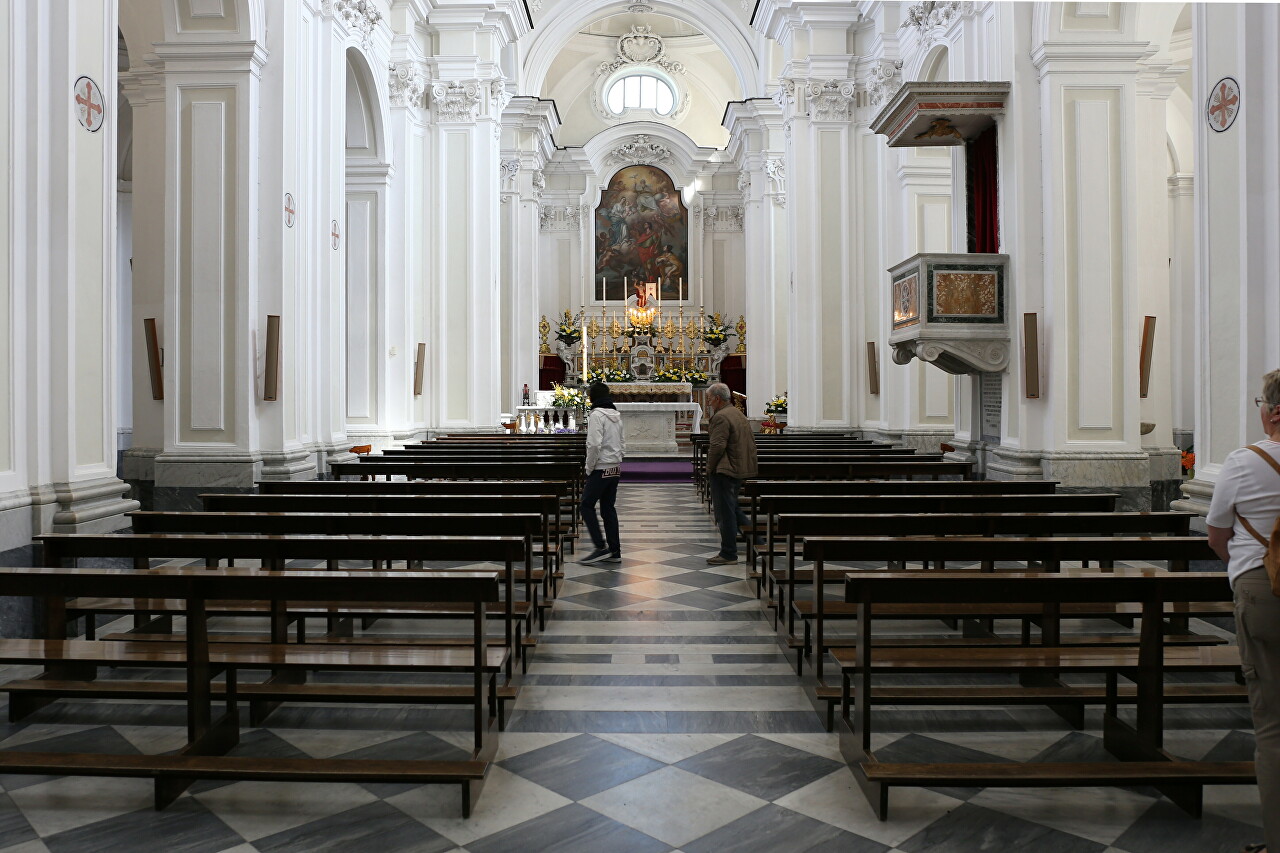
Suffering from frequent Saracen raids, the fishermen were forced to move to a safer place - to the top of the hill, where a new church was built. In the 14th and 15th centuries, the parish of St. Vitus was the only one for both those living on the hill and the surrounding farms.
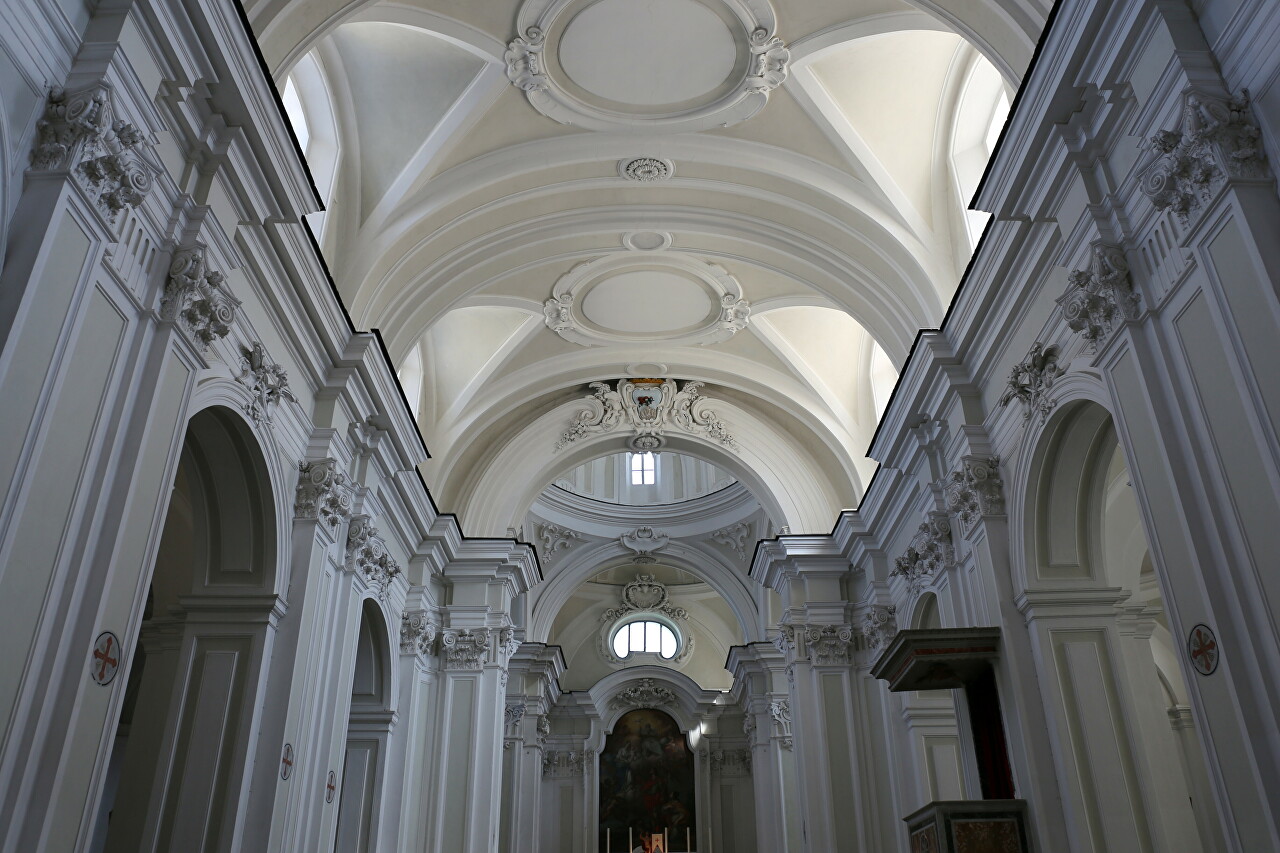
In the 15th century, the settlement began to expand towards the sea, and the Loreto Basilica was built below. By the early 18th century, the population of St. Vitus parish had grown, and the old church was becoming cramped. In 1735, the municipality of Forio allocated funds for its reconstruction, which ended in 1748.
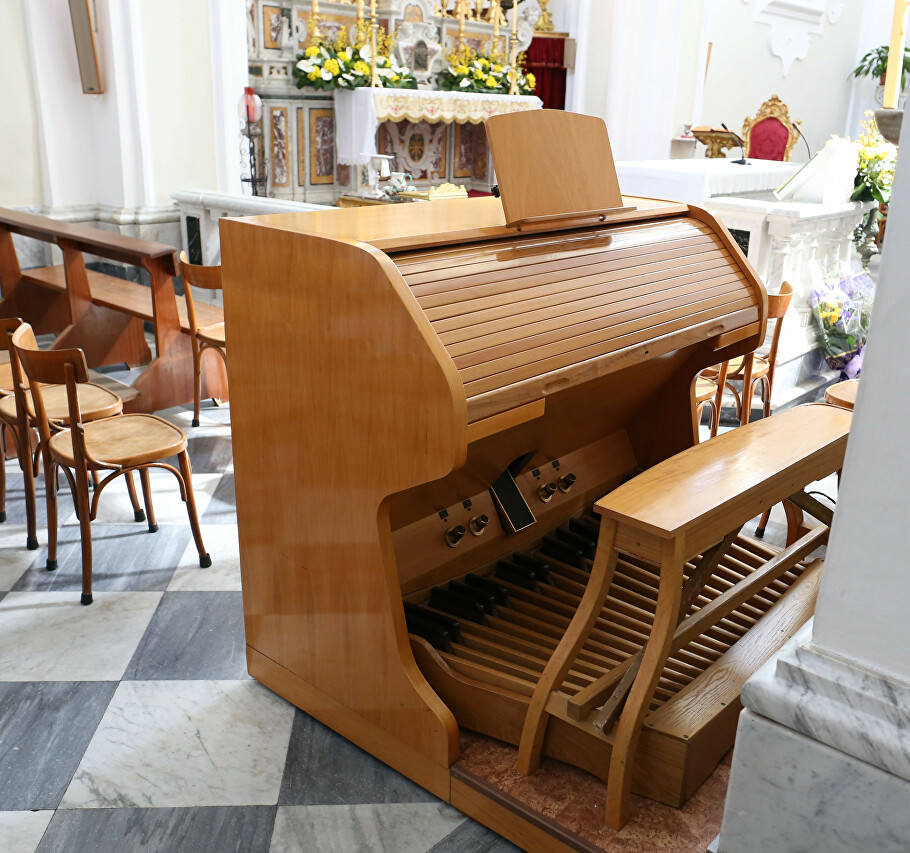
In 1790, the church received the main and side altars of colored marble, made in the sixteenth century, the floor was laid with marble slabs. A wooden figure of St. Vitus from the 16th century was placed in the main altar.
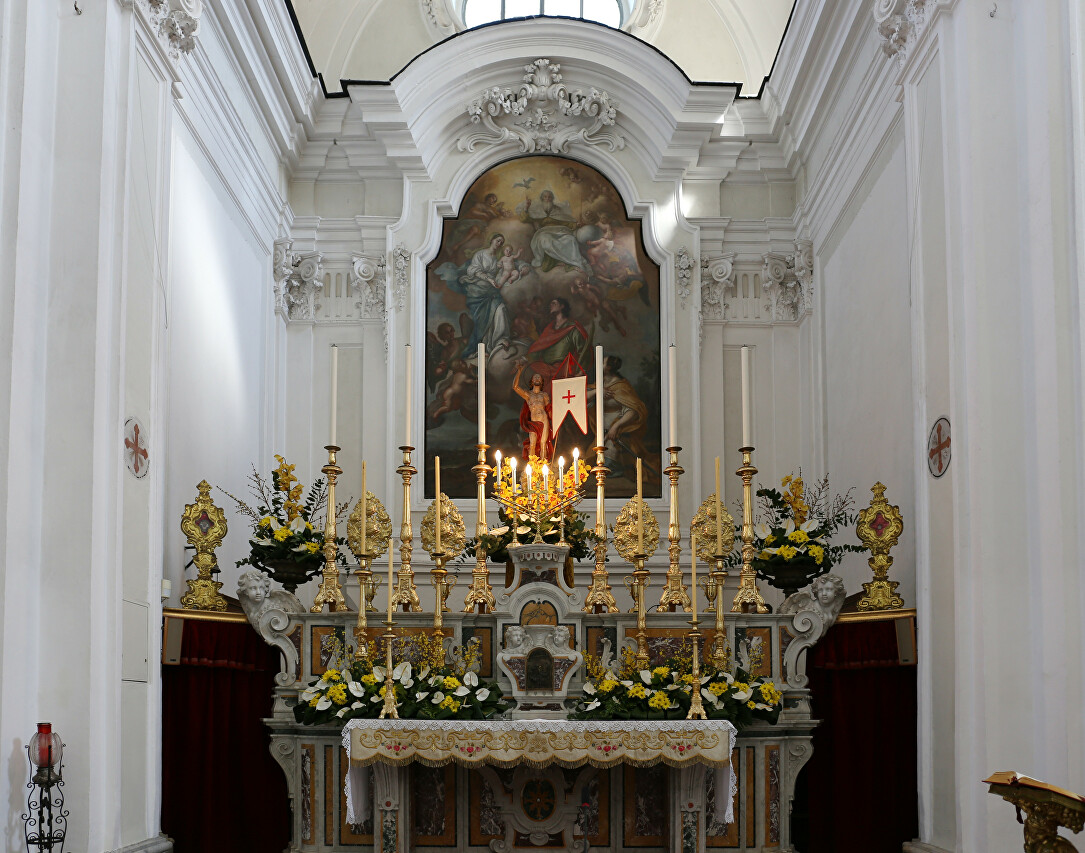
In one of the chapels, you can see a wooden triptych of the fourteenth century with images of the Madonna delle Grazie, St. Catherine of Alexandria and St. Vitus.
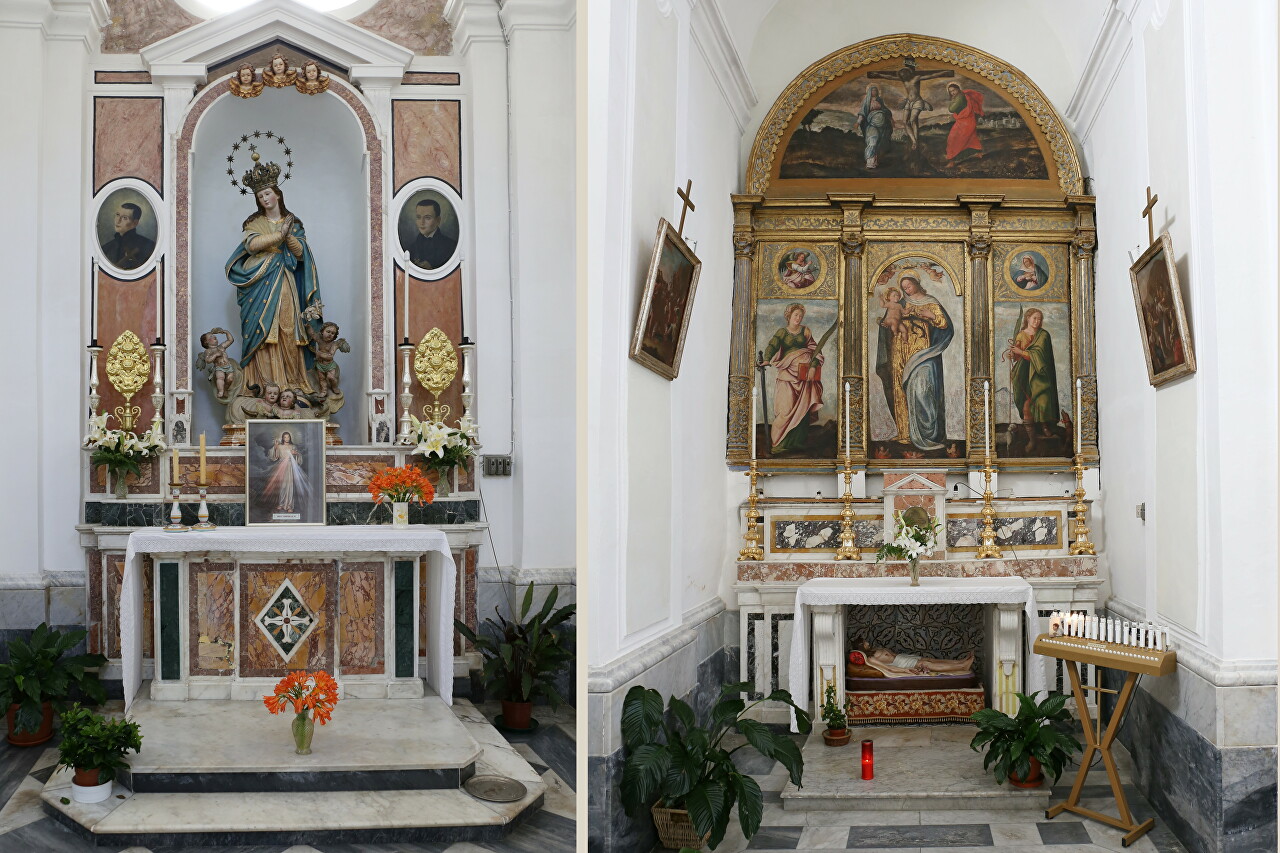
Behind the main altar are the tombstones of Pastor Nicolantonia of Malta, who did not flee the city to the countryside during the plague of 1656, but stayed to help the sick.
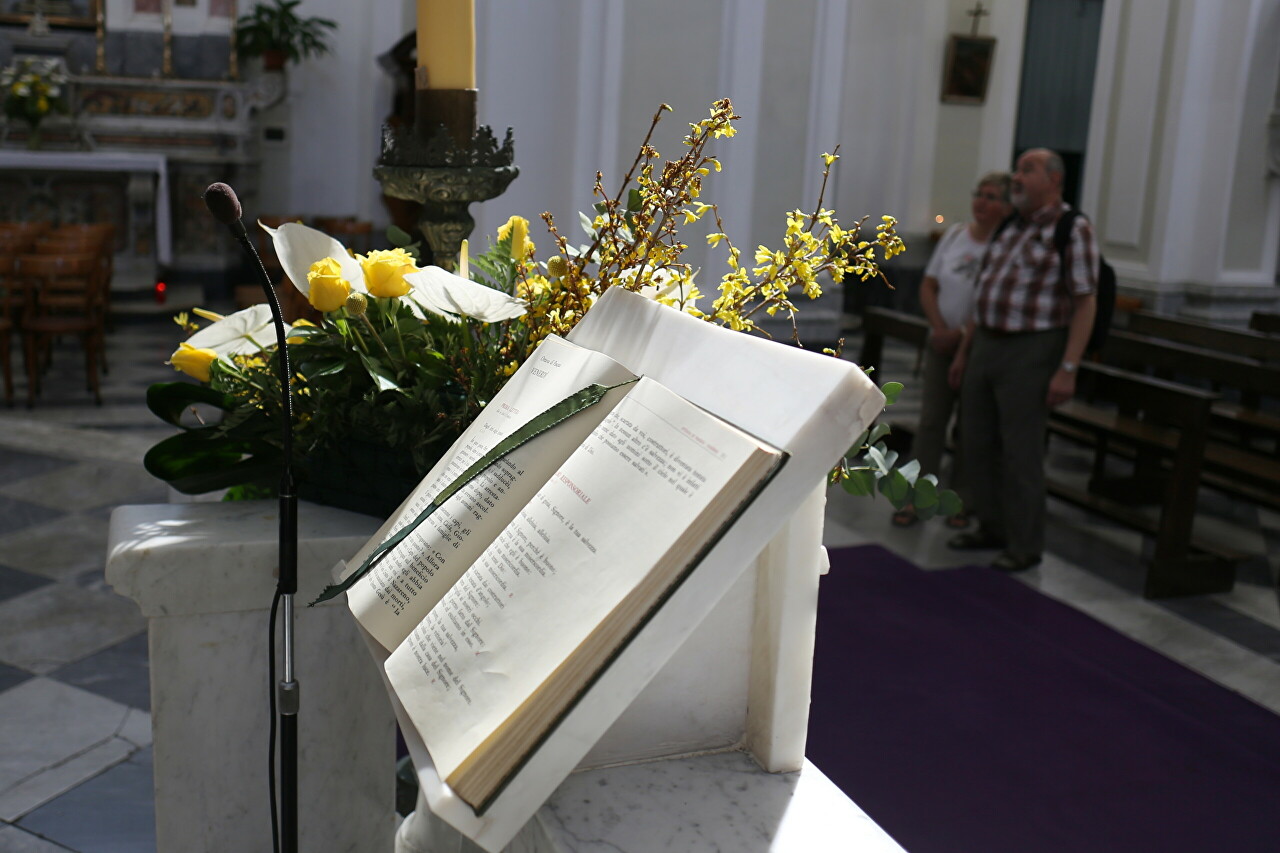
On the walls in the chapels of the church there are several paintings, these are the works of local artists Cesare Calise and Alfonso Di Spigna.
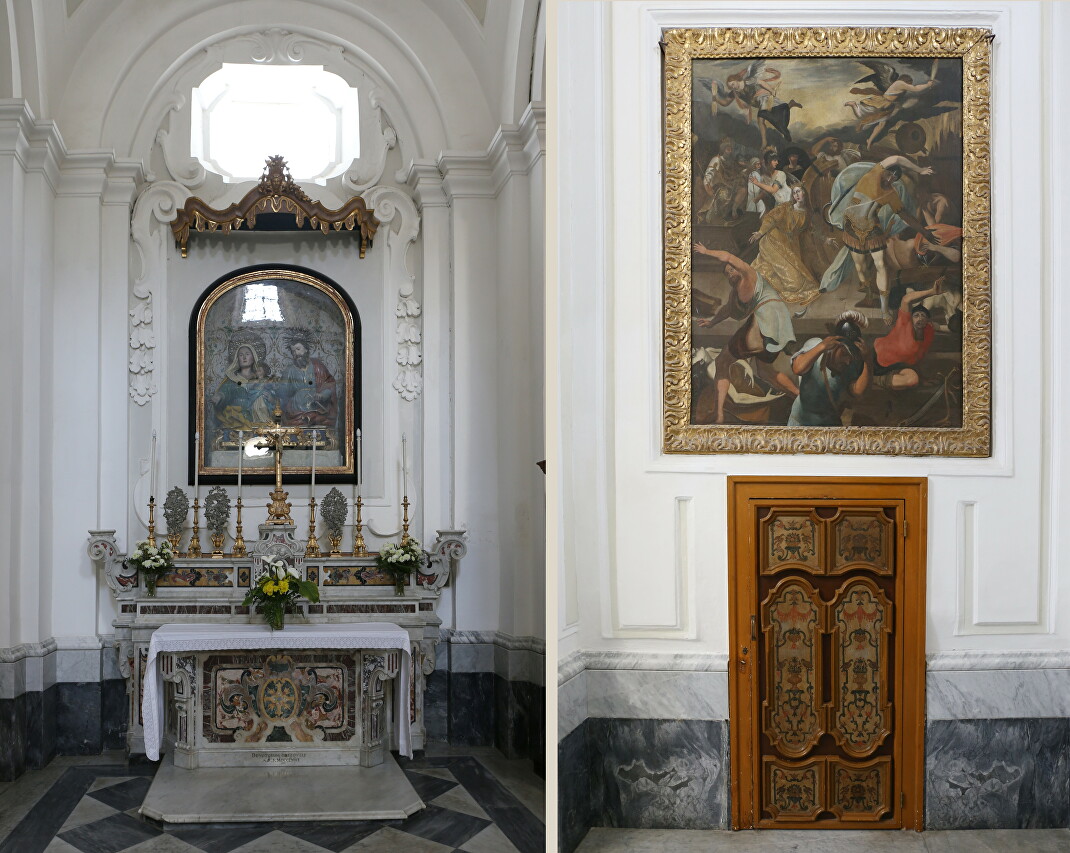
The facade was flanked by two chapels-in the name of San Martino on the right and the Apostle James on the left, which were demolished in 1857. In their place, Baroque towers were built with pear-shaped domes typical of Southern Italian architecture. On the right tower hung a bell, donated to the city in 1854 by King Ferdinand II.
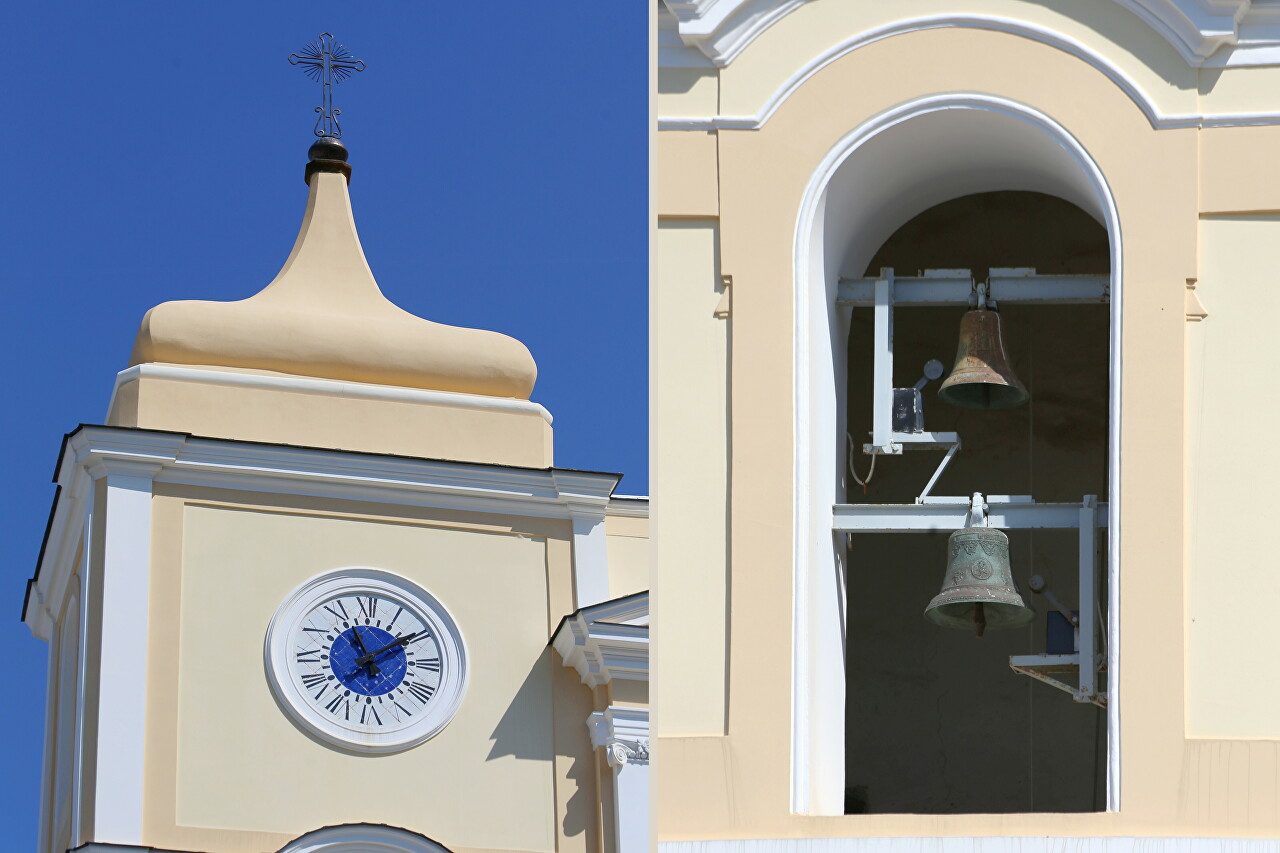
A clock with a ceramic tile dial was installed on the left tower.
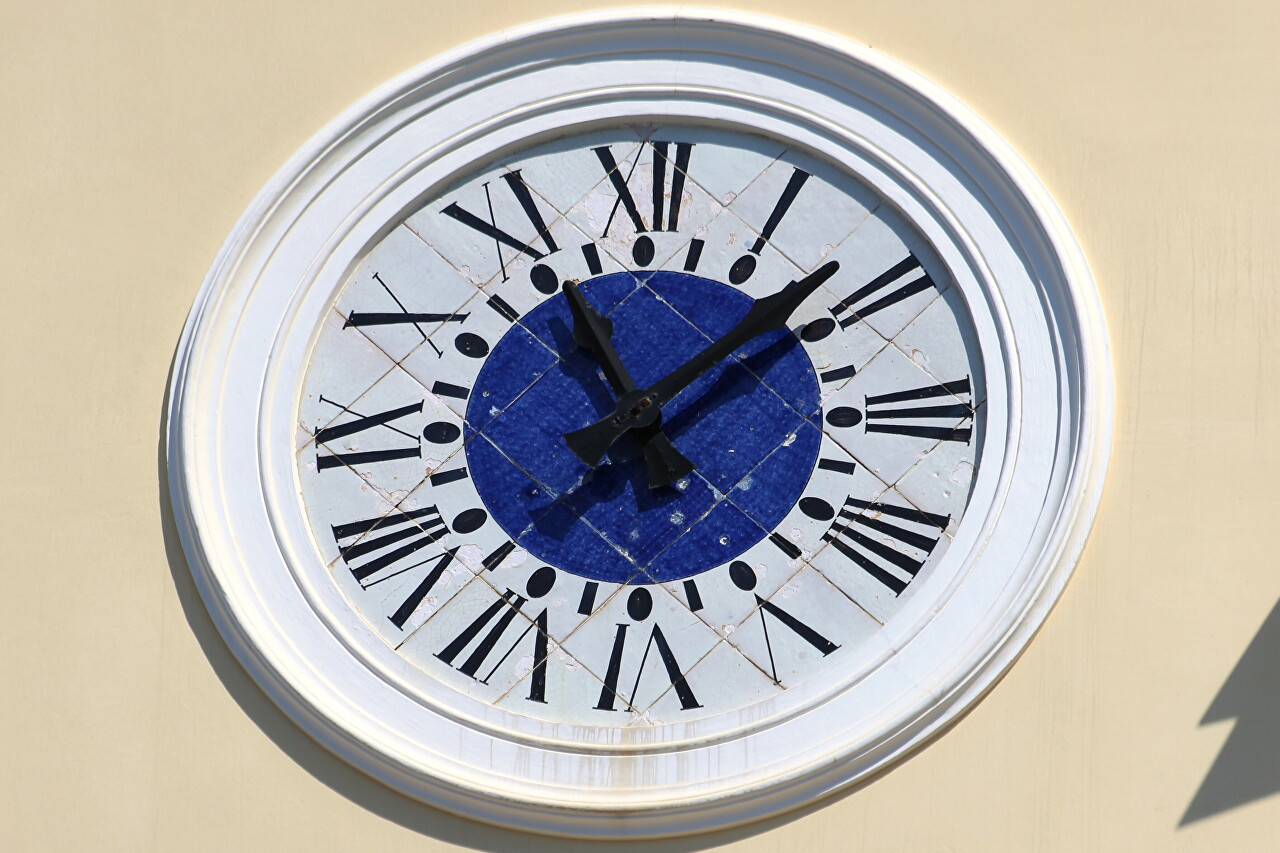
In the second half of the 19th century, the middle part of the facade was reconstructed, and the church took on the final appearance that it still has today. In 1881, the facade was decorated with a ceramic panel depicting St. Vitus.
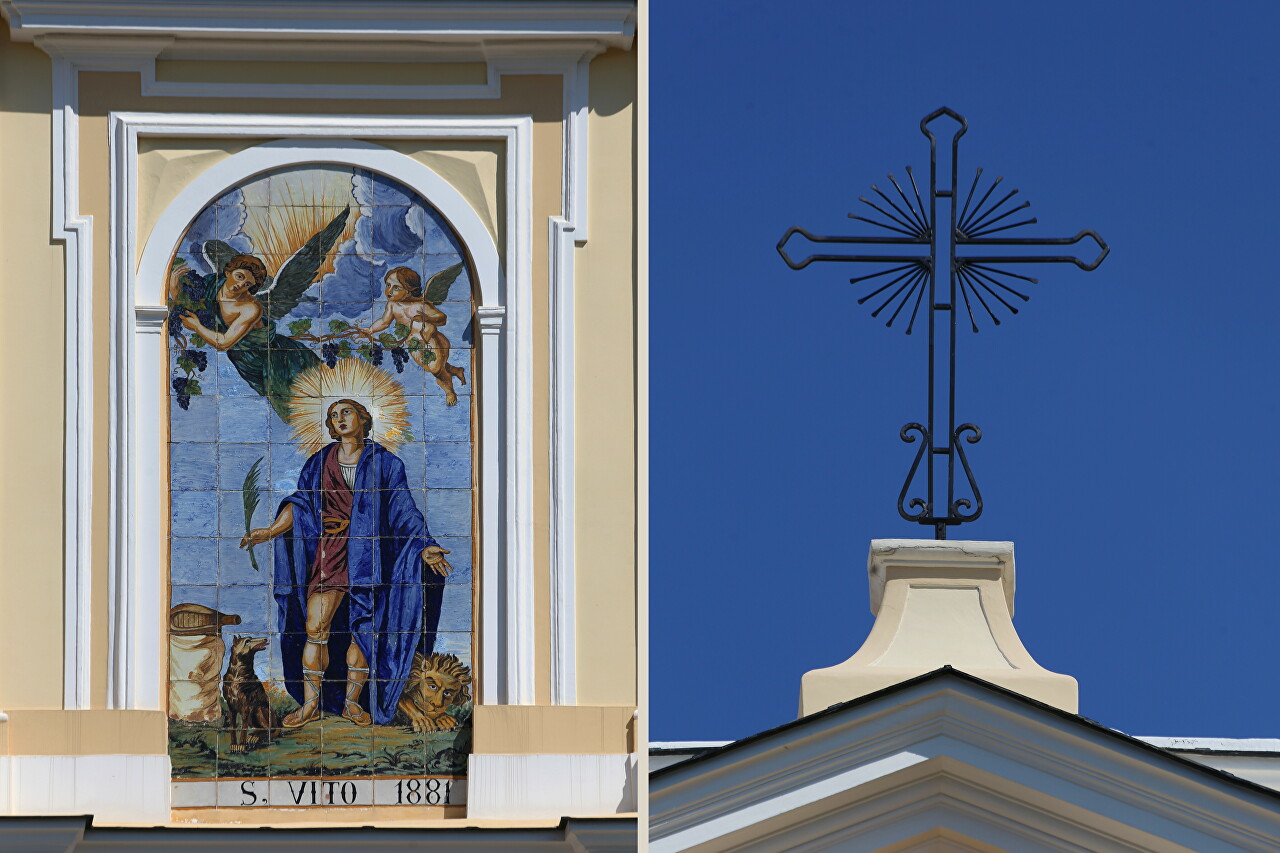
In 1989, the church of St. Vitus received the status of a papal basilica and was decorated with the coat of arms of John Paul II.
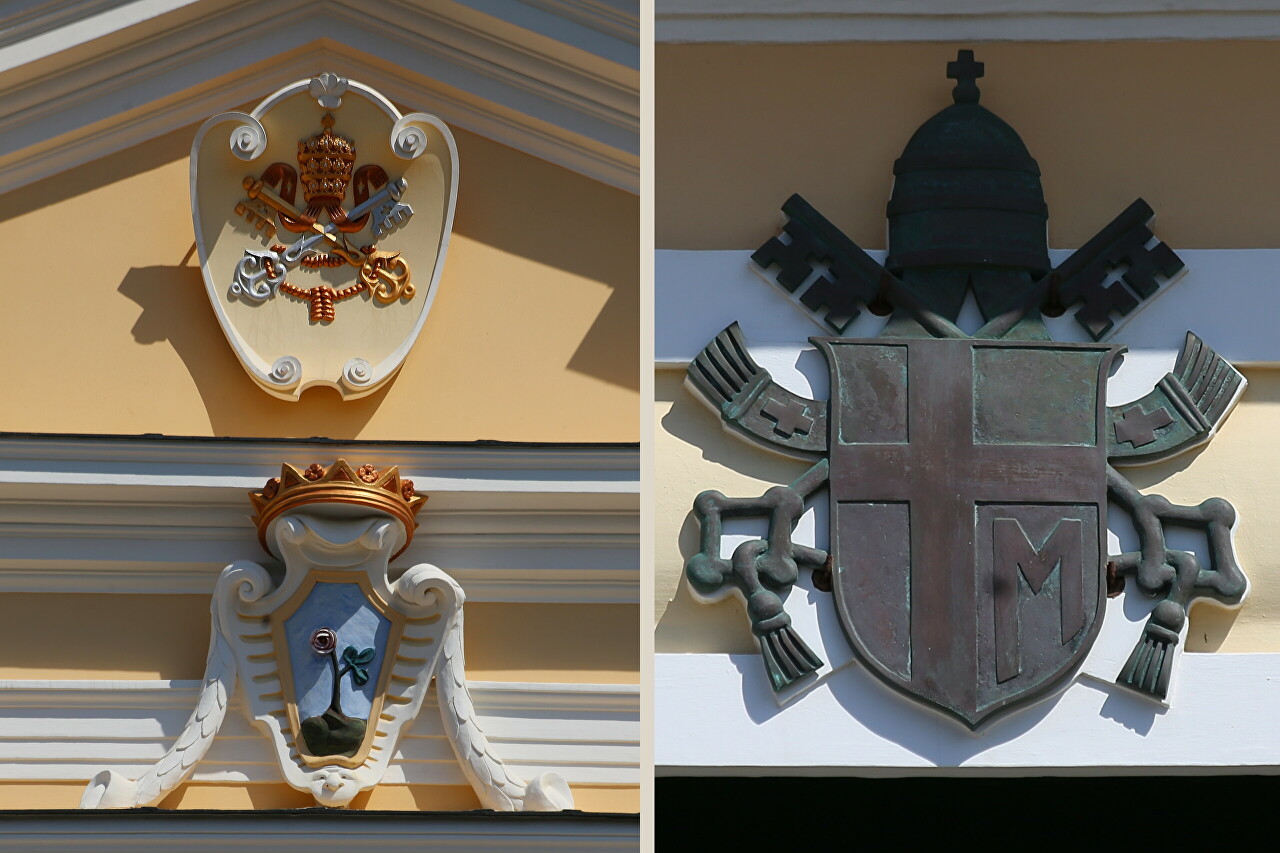
The square in front of the church is paved with slabs of volcanic lava and fenced with an iron grate. Something was celebrated here yesterday, and the fireworks box reminds us of that.
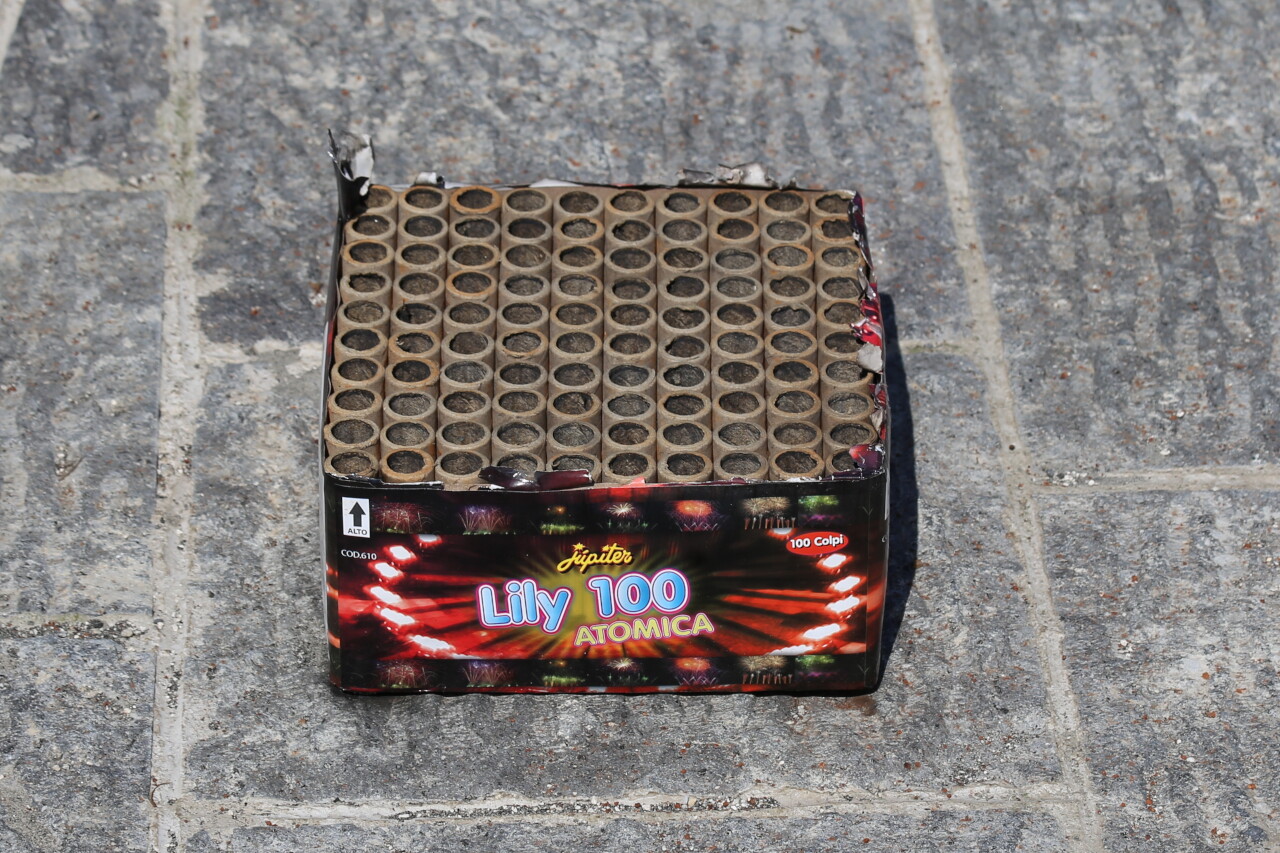
 The church is open in summer from 9 to 20 hours, in winter until 19. Masses are held in winter at 9: 30, 11: 00 and 18: 00, in summer at 9: 30, 11: 00 and 19: 00. St. Vitus, the island's patron saint, is celebrated on June 15, and the holiday lasts for four days, from June 14 to June 17.
The church is open in summer from 9 to 20 hours, in winter until 19. Masses are held in winter at 9: 30, 11: 00 and 18: 00, in summer at 9: 30, 11: 00 and 19: 00. St. Vitus, the island's patron saint, is celebrated on June 15, and the holiday lasts for four days, from June 14 to June 17.